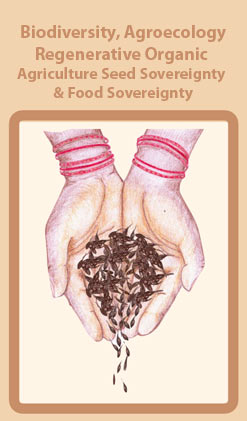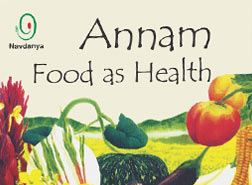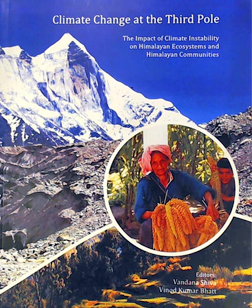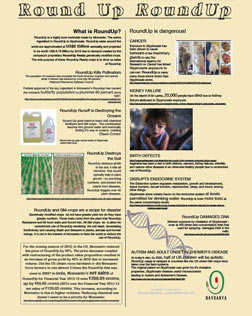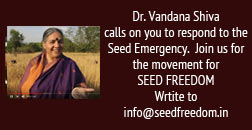By Dr Vandana Shiva
26th Oct 2013
Dear Mr Pawar,
As the NCP leader you have expressed your views in a blog titled "Food for Thought", posted on your party's official website.
"
Here are my responses to the questions you have raised in your blog about GMOS
You say "I am not a scientist. But as a farmer, I would like my friends opposing the GM technology to answer some of my queries. For instance, is it not a fact that GM technology substantially curtails the requirement of fertilisers and pesticides?
No Mr Pawar, both fertilizer use and pesticide use goes up with GMOs. Our studies in Vidharba show a 13 fold increase in pesticde use on Bt cotton, because of the emergence of non target pests, and because of emergence of resistance in bollworm,the target pest.
You also said.
"Second, is it not a fact that we might be consuming oil made out of GM soya produced in the US? But, we aren't willing to benefit from the same technology on our own soil. Why?"
I would like to inform you Mr Pawar that when zero duty soya oil imports were allowed in 1998 and our edible oils were banned, we started a Sarson Satyagraha. People do not consume soya oil because they like it, but because the US govt and your govt sudsidise it. In 1998 when international price of soya was $150 a ton, the US subsidy was $190 a ton. And Mr Chidambaram had added a domestic subsidy of Rs 15 for the PDS. If you subsidized healthy oils like mustard, sesame,groundnut,coconut, that is what Indians would be using, as they have used for centuries.It was the slum women of Delhi who refused to eat soya and wanted the mustard back.You are pushing GMO soya oil on Indians.
You have asked,”Is it not a fact that GM technology has increased the food production four-fold, reducing the need of additional land, thereby protecting the green cover,"
No Mr Pawar,GMO technology has not increased food production at all. The Union for Concerned Scientists study “Failure to yield” has shown that there is no increase in yeld through GMO technology. The yields of Bt cotton are declining. Yield is not a function of GMO technology, but comes from the plant into which the new genes of Bt or Round Up Resistance are added. Yield is a multigenetic trait. Gnetic engineerin can only deal with single gene traits,like putting toxic genes into plants.
You write “My only contention is that let us not kill this promising science by placing arbitrary bans on its trials. Let the scientific community get the freedom to conduct its experiments on this technology with the strictest possible regulatory framework in place. Is this asking for too much?"
The Supreme courts technical Expert committee has asked for regulation to be tightened, and meantime a moratorium should be put. This is a scientific imperative. Good scientists should not be afraid of more research on safety. It is scientists whose careers are based on partnership with industry who panic when Biosafety is strengthened. That is why there is an attempt to undermine our Biosafety laws and replace them with BRAI. And there is not one scientific community ,but many.The big division is pro industry scientists, and scientists independent of industry. In science as in any other field, freedom must be bounded by social and ecological responsibility. Neither corporations, nor scientists,nor politicians have an absolute freedom to destroy life , of humans or other species.
You have celebrated the spread of Bt cotton in your blog.You have said.
"I believe that a farmer is the best judge to decide on the adoption of a new concept or ideology. Let me tell you that 90 per cent of the India's cotton farmers have already adopted the GM technology”.
There is not a word in your blog on the tragedy of farmers suicides in the cotton areas.Your state , Maharashtra is the capital of Bt Cotton, and the capital of farmers suicides. In the past decade as the suicides have taken epidemic form, there has not been one word on this crisis from you. And all you do is celebrate the bt cotton that got the farmers into debt, due to the high royalty extracted by Monsanto. And farmers are not choosing Monsanto’s seeds. All other options have been destroyed. It is not profits , but deliberate destruction of alternatives that have pushed farmers into the Bt cotton trap, and as a consequence in the suicide trap. Farmers varieties are displaced through the very clever strategy of “seed replacement”. You tried to introduce a Seed Law on Seed Replacement and compulsory licensing in 2004. We had to undertake a Seed Satyagraha to stop the law and prevent the destruction of our rich agrobiodiversity and farmers varieties , and the freedom of our farmers to save and exchange their seeds freely.Public varieties have mysteriously stopped being released fro the Central Cotton Research Institure based in Nagpur. And most Indian companies are locked into licensing arrangements with Monsanto, and can only sell Monsanto’s Bollgard Bt cotton seeds. This Monopoly over cotton seed has grown during your tenure as agriculture Minister.
You have also written "With the intervention such as bio-fortified rice with pro-vitamin A, iron and zinc, GM technology provides farmers with an intervention-free technology."
Unfortunately, GMO Golden Rice fortified with vit A is far less efficient than our rich biodiversity in addressing vit A deficiency. A far more efficient route to removing vit. A deficiency is biodiversity conservation and propagation of naturally vit. A rich plants in agriculture and diets. Table below gives sources rich in vit. A used commonly in Indian foods.
Sources rich in vit. A used commonly in Indian foods.
Source Hindi name Content (microgram/100g)
Amaranth leaves Chauli saag 266-1,166
Coriander leaves Dhania 1,166-1,333
Cabbage Bandh gobi 217
Curry leave Curry patta 1,333
Drumstick leaves Saijan patta 1,283
Fenugreek leaves Methi-ka-saag 450
Radish leaves Mooli-ka-saag 750
Mint Pudhina 300
Spinach Palak saag 600
Carrot Gajar 217-434
Pumpkin (yellow) Kaddu 100-120
Mango (ripe) Aam 500
Jackfruit Kathal 54
Orange Santra 35
Tomato (ripe) Tamatar 32
Milk (cow, buffalo) Doodh 50-60
Butter Makkhan 720-1,200
Egg (hen) Anda 300-400
Liver (Goat, sheep) Kalegi 6,600–10,000
Cod liver oil 10,000–100,000
The lower cost, accessible and safer alternative to genetically engineered rice is to increase biodiversity in agriculture. Further, since those who suffer from vitamin A deficiency suffer from malnutrition . Generally, increasing the food security and nutritional security of the poor through increasing the diversity of crops and diversity of diets of poor people who suffer the highest rates of deficiency is the reliable means for overcoming nutritional deficiencies.
Sources of Vitamin A in the form of green leafy vegetables are being destroyed by the Green Revolution and Genetic Engineering which promotes the use of herbicides in agriculture. The spread of herbicide resistant crops will further aggravate this biodiversity erosion with major consequences for increase in nutritional deficiency. For example, bathua, a very popular leafy vegetable in North India, has been pushed to extinction in Green Revolution areas, where intensive herbicide use is a part of the chemical package.
Through what you call an “intervention free technology”, you are promoting a model of agriculture in which there are many interventions ,but all interventions are made by corporations like Monsanto. They intervene in the plant by adding toxic genes through genetic engineering, they intervene by claiming patents and collecting royalty on seed,they intervene in farmers lives through trapping them in debt and pushing them to suicide, they intervene politically through you. This is heavy intervention, not intervention free. It is the farmers whose intervention you do not want to promote. We work to see more farmers intervention in decisions about agriculture ,in looking after the soils though Organic Farming, in exercising Bija Swaraj, Seed Sovereignty, in living a life of freedom and dignity.
The choice is clear. It is the freedom of Corporations like Monsanto Vs the freedom of our small farmers.
So far you have batted for Monsanto.
As Agriculture Minister of India, I hope you will remember that it is India’s soil, our seeds ,and our farmers you are meant to protect.


